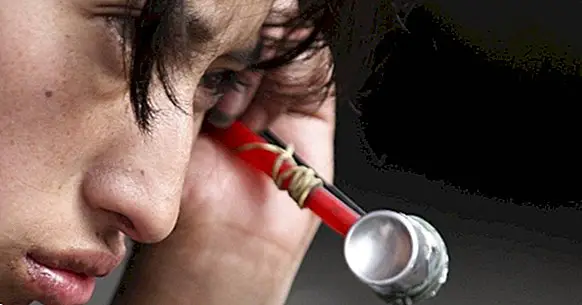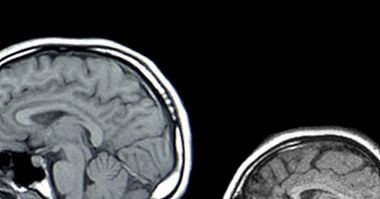Dual pathology: causes and treatments and associated disorders
According to statistics, six out of ten drug addicts also suffer some kind of mental disorder .
While it is true that they can be considered as two separate conditions, in reality people are victims of a chronic disease known as dual pathology .
These patients can suffer a lot of symptoms, to the point that their personal and family situation is completely overwhelmed, becoming an untenable circumstance for any of them.
- Related article: "Addiction: disease or learning disorder?"
What is dual pathology?
Within the field of mental health, it is called dual pathology that condition that concomitantly combines an addiction with some type of mental disorder .
There is a wide range of types of mental disorder that these people can suffer, going from an anxiety disorder; up to psychotic or schizophrenic disorders, mood disorders such as depression or bipolar disorder; and the different pathological features of the personality.
Also, while the person suffers from some type of psychiatric illness or condition, also suffers an addiction to any type of toxic substances . This addiction can be to any substance accepted by society such as tobacco, coffee, alcohol or certain medications; or to some type of narcotic or narcotic drug such as cocaine, amphetamines or cannabis.
In some cases, behavioral-type addictions have also been registered as ludopathies or addiction to the Internet and social networks.
Causes of dual pathology
From a theoretical perspective, there are different cause-effect links between the two diagnoses characteristic of dual pathology. These possible causes are:
1. Mental disorder as a risk factor
Having some type of mental disorder is a risk factor when developing some type of addiction. Psychiatric diseases are a premorbid factor in dual pathology, due to the different features of the disorders such as impulsiveness, depressed mood or seclusion and social withdrawal.
2. Consequence of substance use
Pathological personality traits can also be considered a sequel or effect of a substance use disorder (SUD). These effects may be due to the consequences or effects that the drug has on the organism, or to the stressors related to consumption .
3. Common causal elements
Another possible cause of dual pathology is that there are common vulnerability factors that surround the person , which can facilitate both the appearance of a mental disorder and an addiction.
4. Independence of disorders
Finally, there are cases in which both disorders are independent, and no type of cause-effect association can be found between them. In these cases, the connection between both diagnoses would be given by the design of the diagnostic classifications, which give rise to overlapping valuations of the different categories.
- Maybe you're interested: "The 16 most common mental disorders"
Clinical manifestations or symptoms
In addition to the symptoms of each of the disorders, patients with some type of dual pathology usually present a series of common clinical manifestations . These symptoms or characteristic manifestations are:
1. Emotional instability
In addition to being a symptom of any personality disorder, emotional instability and depressed mood are very common in people with substance use disorder.
2. Cognitive disorganization
Cognitive disorganization, that is, the tendency for thought to be transformed into disorganized or tangential thoughts, is also typical of some mental illnesses. However, it is a fairly common symptom among people suffering from dual pathology, regardless of their diagnosis of mental disturbance.
3. Impulsiveness and aggressiveness
Patients diagnosed with dual pathology tend to have impulsive and / or violent behaviors. This angry behavior can occur in the form of self-aggression , provoking self-harm, as in the form of aggressiveness towards others expressed in a sudden and impulsive way.
- Related article: "Non Suicidal Self-injury: Who does it affect and why is it produced?"
Treatments of dual pathology
At present, no specific treatment has been developed for people with dual pathology.The action protocol consists of addressing on the one hand the mental disorder and, in addition, performing a parallel intervention for the substance use disorder.
These treatments consist of a combination of psychological intervention, which is considered as the treatment of choice in practically all cases, with the administration of psychotropic drugs , which have a more limited efficacy but are very useful for reducing the symptoms that interfere with the patient's evolution.
Likewise, intervention is also necessary with the patient's relatives , in order to facilitate the management of coexistence and coping with the symptoms and behaviors of the patient.
In cases in which the substance use disorder is underlying the psychiatric illness, the treatment of drug dependence will be a priority for the mental disorder . Since it is very likely that by decreasing the symptoms of the first, also improve the second.
Another of the interventions that have been very useful in the treatment of dual pathology are psychoeducational techniques aimed at raising awareness about the effects and dangers of substance use, as well as motivational interviews.
Associated personality disorders
As mentioned above, there are many disorders or mental conditions that can appear or be part of a dual pathology . However, there are two of them that stand out for their degree of appearance. They are the antisocial disorder of the personality and the borderline personality disorder, for which there is a more specific type of intervention.
Antisocial personality disorder
Usually, there are two types of difficulties in the intervention with these patients. One of them is that it is not usual for the patient to attend treatment by his own determination , so that both the healthcare staff and the therapist are perceived as "enemies".
The second complication is that drug use tends to stay and resist psychological treatment , fact that generates high levels of frustration in the clinician.
Because of this two factors, it is advisable to follow a series of patterns ordered in a hierarchical manner. Throughout which they have to implement a series of cognitive and behavioral changes. This series of steps are:
- Since the patient's behaviors aim to obtain rewards or avoid punishments , an analysis of the advantages and disadvantages of the performance of certain behaviors must be carried out together with him.
- Once the patient is aware of the consequences of his actions and the results that this may have on the others, we proceed to guide you around the consequences of your long-term behaviors , using techniques such as guided imagery, proven.
- Act on the person so that he assimilates respect and appreciation of the rules and consideration for others.
Borderline personality disorder
Much like antisocial personality disorder, people with borderline personality disorder are difficult to treat as long as they feel a low tolerance for frustration, it is very complicated for them to learn from their own mistakes , and they also persist in the consumption of substances.
Likewise, present a wide variety of cognitive distortions and a tendency to dichotomous thinking that hinders the psychological intervention of the professional.
One of the steps to follow in the treatment of these patients is to work and facilitate the tools to improve your social skills , as well as how to manage frustration. Through cognitive restructuring, occupational therapy and family therapy, great advances have been made in the treatment of this type of dual pathology.



















